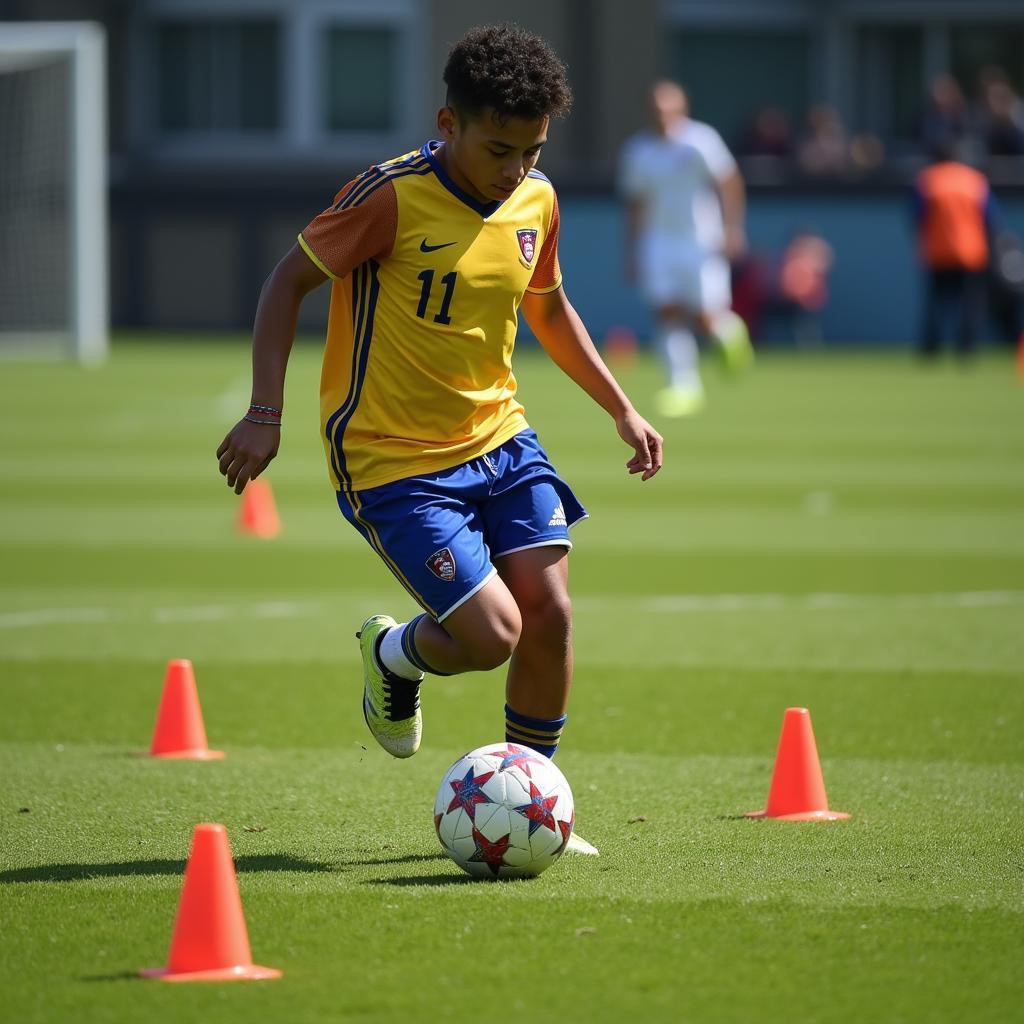Mastering Football Skill: Dribbling Made Easy
October 14, 2024Dribbling, the art of maneuvering the ball with finesse and control, is a fundamental skill in football. It’s the key to unlocking defenses, creating scoring opportunities, and leaving opponents in your wake. Whether you’re a budding footballer or a seasoned player looking to enhance your game, this guide delves into the intricacies of dribbling, providing you with the knowledge and techniques to navigate the pitch with confidence and flair.
Why is Dribbling Important?
Dribbling is far more than just running with the ball. It’s about outwitting your opponent, dictating the tempo of the game, and creating space for yourself and your teammates. A player with exceptional dribbling skills can:
- Break Down Defenses: A skilled dribbler can weave through defenders, creating gaps in the opposition’s line and disrupting their defensive structure.
- Create Scoring Opportunities: By drawing defenders towards them, skilled dribblers can create space for teammates to exploit or open up shooting opportunities for themselves.
- Maintain Possession: In tight situations, dribbling allows players to retain possession, relieving pressure and building attacks from deep.
 Footballer Dribbling
Footballer Dribbling
Types of Dribbling
Football offers a diverse range of dribbling techniques, each suited to specific game situations and player preferences:
1. Speed Dribbling
As the name suggests, speed dribbling is all about pace. It’s used when players need to cover ground quickly, often on the flanks or during counter-attacks.
2. Close Control Dribbling
This technique emphasizes keeping the ball as close to the feet as possible, allowing for rapid changes in direction and leaving defenders wrong-footed.
3. Change of Pace Dribbling
By alternating between slow, controlled touches and bursts of acceleration, players can deceive defenders and create space for themselves.
4. Skill Moves
From step-overs to roulettes, skill moves are designed to outfox defenders in one-on-one situations. These flashy techniques require practice and timing to execute effectively.
Essential Dribbling Tips for Every Player
Improving your dribbling skills takes dedication and practice. Here are some invaluable tips to elevate your game:
- Practice Regularly: Consistent practice is key. Dedicate time each session to focus on ball control, using cones or other markers to create drills.
- Head Up: Avoid looking down at the ball. Keep your head up to scan the field, anticipate defenders’ movements, and make informed decisions.
- Use Different Parts of Your Feet: Become comfortable dribbling with both the inside and outside of your feet, as well as your laces. This versatility will make you a more unpredictable and dangerous player.
 Dribbling Drills
Dribbling Drills
- Vary Your Touch: Adjust the weight and direction of your touches based on the game situation. Light touches for close control, firmer touches for speed.
- Body Movement: Use your body to shield the ball from defenders. Feints, shoulder drops, and changes in pace can wrong-foot opponents and create openings.
- Be Unpredictable: Don’t be afraid to try new moves and experiment on the pitch. The element of surprise can be your greatest asset.
Conclusion
Mastering the art of dribbling is a continuous journey. Embrace the challenge, be persistent in your practice, and enjoy the process. As you become more comfortable and confident with the ball at your feet, you’ll discover a world of possibilities on the pitch, unlocking your full potential and becoming a force to be reckoned with.